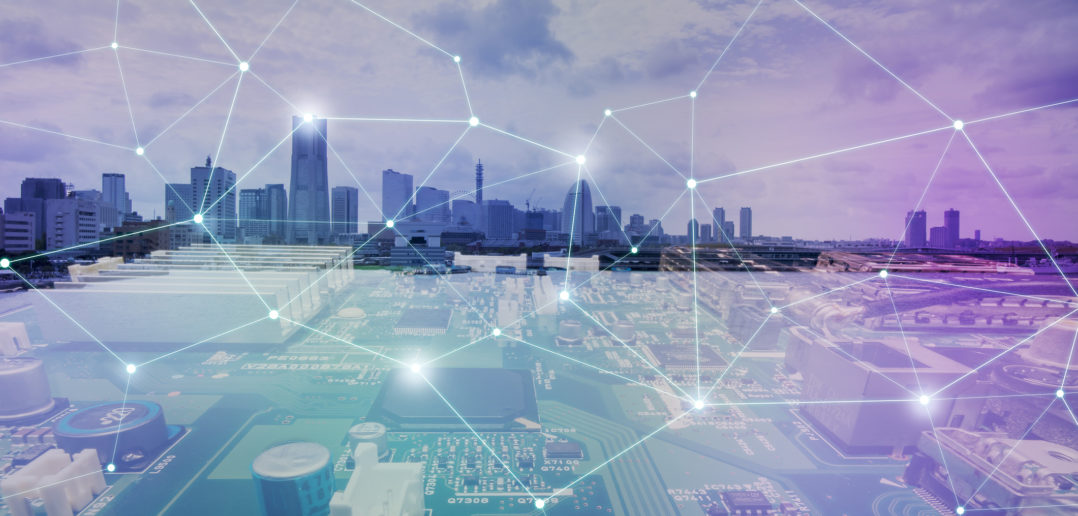Everything you need to know about the new PropTech for smart buildings
Until now, the promise of smart building technology was only achievable for large real estate companies with budgets of many millions of dollars. The Internet of Things IoT (in which a network of physical devices, appliances and software connect and exchange data to support automation) has been prohibitively complex and expensive for most building owners and facility managers to explore.
Technology used to power the Internet of Things (IoT) began as custom, proprietary systems. Adding connectivity meant wiring up buildings and replacing appliances. Installing sensors to collect data was costly and time consuming. And so, most commercial real estate (CRE) companies still use manual methods to collect and confirm the data they rely on to manage building temperature, layout, and maintenance schedules.
Next-generation PropTech makes smart buildings accessible for all
Today, PropTech solutions embedded with smart, wireless sensors are radically changing the smart building industry. Affordable, low-maintenance PropTech means real estate companies of all sizes can also experience the benefits of the Internet of Things – cost savings, increased margins, and improved tenant relationships.
“Smart building technology investments typically pay for themselves within one or two years by delivering energy savings and maintenance efficiencies.”
- Jones Lang LaSalle
In addition to cost savings, innovative real estate companies can offer tenants advanced features and services that can command premium prices. In fact, as tenants come to expect a smart experience, buildings without them may have difficulty filling space and may need to lower their prices.
Let’s take a closer look at the quantitative and qualitative benefits the new generation of PropTech can provide.
Building maintenance
- Avoid unplanned and costly repairs
- Keep inventory stocked
- Optimize cleaning service
If you knew when critical equipment such as your HVAC system was about to fail, you could reduce unplanned and costly repairs, not to mention avoiding downtime and complaints from tenants. Sensors can measure and report on equipment usage, overheating, or unexpected changes so you can get ahead of problems before they happen.
In addition to behind-the-scenes maintenance improvements, smart buildings are also integrating sensors into services that are customer-facing. For example, sensors in supply rooms can let facilities managers know when inventory needs to be stocked. Sensors in office buildings allow cleaning services to be optimized and confirmed.
Energy management
- Adjust lighting and temperatures
- Decrease building operation costs
- Support sustainability programs
With energy representing 19% of the total expenditures for the typical building, proactive, data-driven energy management can make a big impact on the bottom line. Smart sensors decrease building operation costs by automatically adjusting lighting, ventilation and temperatures based on the number of occupants and building usage patterns. According to Energy Star, even a 10% decrease in energy use can lead to a 1.5% increase in net operating income, increasing a 200k square foot asset value by $500k. Simply by varying ventilation levels based on the number of people in a room, occupancy detection sensors can decrease building operation costs by up to 18%.
In addition to cost savings, CREs and building managers look to sensor-driven technology to meet increasingly strict energy regulations as part of a comprehensive sustainability program.
Space utilization
- Configure layout based on occupancy and footpath sensing
- Plan office moves, remote work and hotdesking strategies
- Book meeting rooms with push buttons
Commercial real estate in the US accounts for 12 billion square feet. But only 67% is utilized. Changing work patterns are driving many companies to re-evaluate their real estate footprint and adapt to lower demand for physical space.
Smart sensors can detect building occupants’ locations, count, and movements with extreme precision, while maintaining individual privacy. Based on the data, CRE companies can reconfigure building layout or plan for changing demand. They can also help tenants make data-based decisions to adjust office layout, add or subtract meeting rooms, or implement hotdesking strategies.
In a retail environment, sensor-based footpath tracking can allow store managers to adjust product placement, plan staff support for peak times, and make inventory adjustments to match customer demand.
Well being
- Keep tenants comfortable and healthy
- Reduce complaints and tenant turnover
- Improve workplace productivity
Among CRE customers, keeping tenants comfortable is a top goal. Companies based in smart buildings find that workers are happier, healthier and more productive. CRE companies also benefit from fewer tenant complaints and less turnover.
Disruptive Technologies’ customers such as CBRE use sensors to track temperature needs based on occupancy, time of day and other variables. They report dramatic differences in their ability to meet customer expectations.
IT’S EASY TO GET GOING QUICKLY
We are excited to partner with innovative real estate companies and PropTech companies to make the promise of smart buildings a reality.
One hundred lightweight, mini-sensors can be installed in just one hour. Wireless technology with low power and long-range capabilities can be used even in large buildings, without needing to tap into the tenant’s infrastructure. Unprecedented battery life allows you to just “sick and forget” without requiring ongoing maintenance.
With a streamlined technology stack [link to sensing solution page, you can get the data those sensors collect integrated into building management systems and analytics software easily, so you can turn those insights into action right away.
To learn more about how Disruptive Technologies and how our partners are helping real estate companies realise the benefits of smart PropTech, meet us at MIPM, March 13-16 in Cannes, France.
Image source: chombosan



